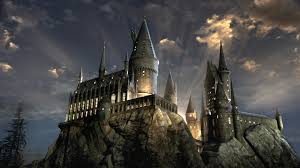It’s nearly the end of the academic year, when our graduating students will scatter across the world to set up their own woodworking businesses.
This year, our students have come from the Falkland Islands to New Zealand, and from the USA to Singapore – and with lots of other countries in between.
Our graduation celebrations start with a public exhibition at Greyfriars Kirk in Edinburgh, on the 11th and 12th of June. Everyone, of course, is welcome.
On the evening of the 11th, Adam Bowett from the Chippendale Society will be awarding a prize to the student who he considers best reflects the work of the great master, Thomas Chippendale.
On the evening of the 12th, Professor Richard Demarco will be awarding the annual Demarco Prize, which celebrates artistic achievement in furniture design.
Greyfriars Kirk is an iconic church in the centre of Edinburgh and provides a large and inspiring space within which to exhibit.
The church today was built on the site of a pre-Reformation Franciscan monastery, with the church being named after the robes that the friars wore.
After the Scottish Reformation of 1560, the grounds of the Franciscan monastery passed into the possession of Mary Queen of Scots, who then granted it to the town council as a burial ground.
To one side of the graveyard is a portion of the Flodden Wall, the defensive wall built around the city following the disastrous battle of Flodden Field in 1513.
Next to the church is George Heriot’s School, founded in 1628, whose Gothic architecture helped provide the inspiration for JK Rowling’s Hogwarts.

It’s a place of pilgrimage for Potter fans, as the Kirkyard also contains a tombstone said to have inspired the creation of Lord Voldemort, as well as poet William McGonagall, who inspired another character, Professor Minerva McGonagall.
Victoria Street, just down the road from Greyfriars, is the inspitration for Diagon Alley, the magical Potter promenade.
Hardly surprising, as JK Rowling wrote the first Harry Potter book in two cafes just a minute’s walk from Greyfriars – the Elephant House and the former Nicholson’s Café.

Visitors to Greyfriars also come to celebrate the life of a Skye Terrier called Bobby, whose owner John Gray, a night watchman, died of tuberculosis in 1858 and is buried in the Kirkyard. The faithful dog remained by his master’s grave.
However, in 1867, a new bye-law was passed that required all dogs to be licensed in the city or they would be destroyed. Sir William Chambers (The Lord Provost of Edinburgh) decided to pay Bobby’s licence and presented him with a collar with a brass inscription “Greyfriars Bobby from the Lord Provost 1867 licensed”. This can be seen at the Museum of Edinburgh.
The good folk of Edinburgh continued to take good care of Bobby until his own death in 1872. The Kirkyard contains a memorial to Bobby, and a brass statue of the faithful bog sits just outside the church grounds.
Greyfriars Kirk is therefore a place of history and inspiration, and an ideal location to celebrate the inspired creativity of our graduating students.